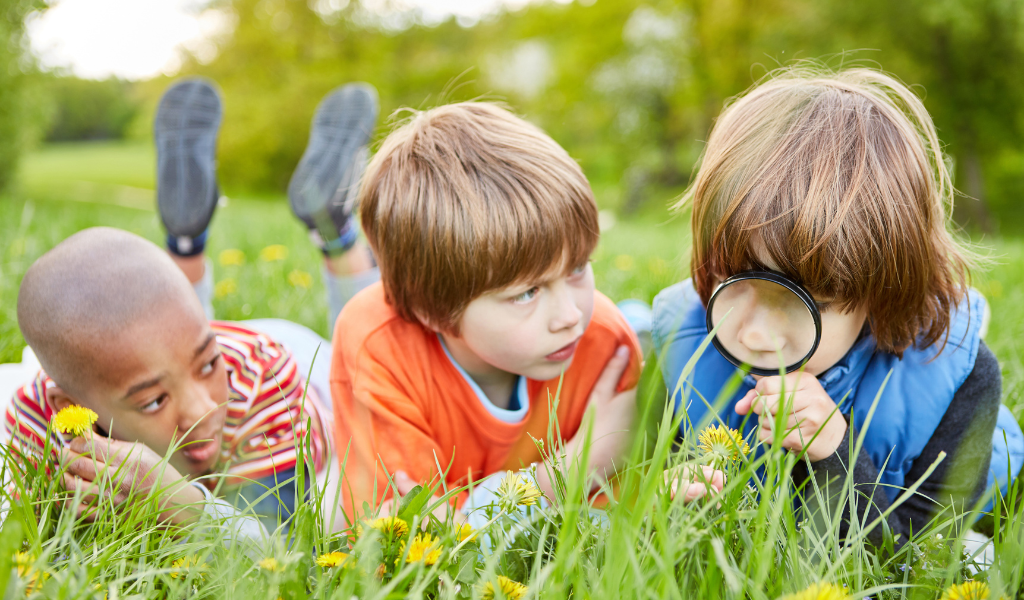In this article, early years expert Sarah Watkins explores the power of risky play in nurturing children’s growth and development.
In today’s safety-conscious society, it’s easy to become overly cautious when it comes to children’s play. However, a balanced approach that embraces risky play is essential for children’s growth and development. The Royal Society for the Prevention of Accidents (RoSPA) suggests that instead of sheltering children from all risks, we should aim to keep them as safe as necessary, not as safe as possible. Let’s explore some of the benefits of risky play.
The Health and Safety Executive (HSE) states that risk is a normal part of play. By providing challenging play opportunities, we allow children to extend their capabilities.
Children instinctively understand what they need for their minds and bodies. They seek out activities such as climbing to develop strength and skills.
According to play expert Kathryn Solly, risky play prompts children to enter the ‘stretch zone,’ that space between the comfort zone and the panic zone. This is where meaningful learning occurs.
By encouraging children to explore and face challenges, we empower them to develop resilience, confidence, and problem-solving skills.

When children learn to assess risk, they become more aware of potential hazards in their environment and learn how to navigate them effectively. This reduces the likelihood of accidents or injuries.
This process supports children to evaluate different options and make informed decisions. When they encounter setbacks or face failure, they are more easily able to bounce back.
According to the Harvard Center of the Developing Child, a significant part of brain architecture is shaped during the first three years of a child’s life.
Risky play can provide powerful experiences that chemically modify certain genes, supporting healthy brain development. By supporting children to engage in adventurous play as part of self-directed activities, we create opportunities for cognitive growth.
Risky play can facilitate a state of flow, promoting deep and meaningful experiences for children.
Flow was described by psychologist Csikszentmihalyi as “flashes of intense living against the dull background of life.” He believed experience of a flow state was essential for healthy development.
Do we provide enough time for children to immerse themselves in absorbing activities? Do we consider why we are saying no to some types of play? Are we flexible enough to match their pace, enabling them to make choices, have control, and make decisions?

Through risky play, children learn perseverance and gain a sense of mastery. While moving out of their comfort zone in a self-directed activity, children will happily keep trying challenging tasks until they achieve success.
Jack, a 4-year-old child, sums this up well: “If I get scared, I still want to try it, so I do it, and then I do it again and again until I can do it. Easy.”
Adventurous play provides essential opportunities for children to understand and manage emotions such as uncertainty, fear, arousal, and coping. Dr. Helen Dodd stresses the importance of allowing children to navigate these emotions in a controlled setting, enabling them to develop vital emotional resilience and regulation skills.
Research shows that even watching other children take risks can help alleviate anxiety.
Risky play ignites children’s innate curiosity and can act as a powerful motivator for learning. By encouraging them to investigate the unfamiliar, we support children’s natural inclination to discover.
As children immerse themselves fully in new experiences, they expand their knowledge and understanding of the world.

When children work to achieve shared goals with an element of risk, they are more likely to work together and ensure that everyone in the team has a fulfilling role. Risky play unites children of different abilities, fostering inclusivity.
Risk is individual. Where, for one child, taking a risk is climbing a tree, for another, it might be allowing a ladybird to crawl on their hand. Supporting an individual child to move out of their comfort zone without unnecessarily limiting or pressuring them, tells that child: “I see you.”
Risky play benefits children’s growth and development and enables children to become resilient, confident, and adaptable individuals prepared to navigate the challenges and uncertainties of life.
You can watch Sarah’s recent Kinderly Learn webinar on-demand, along with 100’s of expert early years sessions by becoming a member.

Sarah Watkins is currently a Forest School leader and associate lecturer at Worcester University. She is the author of ‘Outdoor Play for Healthy Little Minds’ and is passionate about the positive impact of outdoor play on children’s wellbeing. She previously spent over a decade teaching, working with all age groups before becoming Head of School. You may have come across Sarah on Twitter under her handle @mini_lebowski!